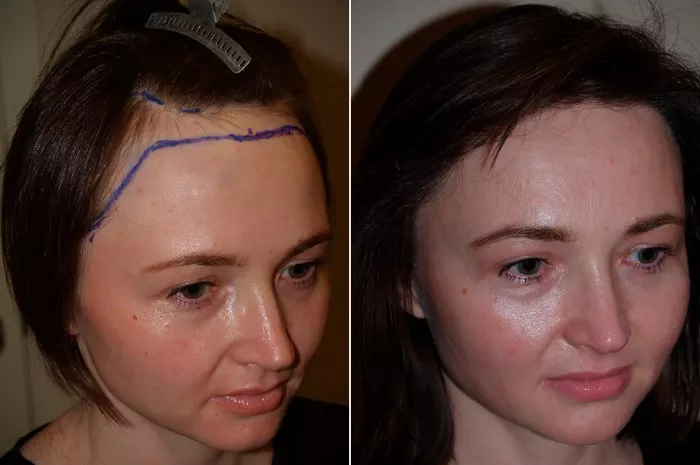Hair loss can be a distressing experience for many individuals, impacting self-esteem and confidence. In the pursuit of regaining a full head of hair, people often explore various treatment options, including hair transplants. While hair transplants have become increasingly popular as a solution for hair loss, there are common questions surrounding their effectiveness, including whether one can grow long hair after undergoing the procedure.
Understanding Hair Transplants:
Before delving into whether long hair growth is achievable post-transplant, it’s essential to comprehend how hair transplants work. Hair transplantation involves the extraction of hair follicles from areas of dense hair growth, typically the back or sides of the scalp (donor area), and implanting them into areas with thinning or balding hair (recipient area). The two primary techniques employed in hair transplantation are follicular unit transplantation (FUT) and follicular unit extraction (FUE).
FUT involves the removal of a strip of scalp from the donor area, which is then dissected into individual follicular units for transplantation. On the other hand, FUE involves the extraction of individual follicular units directly from the donor site using a small punch tool, leaving tiny scars that are less noticeable than those resulting from FUT.
Can Long Hair Grow from Transplanted Follicles?
One of the misconceptions surrounding hair transplants is the belief that transplanted hair follicles cannot grow long hair. However, this notion is largely unfounded. Hair follicles extracted during a transplant retain their intrinsic characteristics, including the ability to produce hair of varying lengths.
After a successful hair transplant procedure, the transplanted follicles undergo a healing process before actively producing new hair. Initially, the newly transplanted hair may shed within a few weeks of the procedure. This shedding is a normal part of the hair growth cycle and should not cause concern. Over time, the transplanted follicles enter the growth phase (anagen phase), leading to the emergence of new hair.
The length of the hair that grows from transplanted follicles is primarily determined by genetic factors and the natural growth cycle of hair. Like natural hair, transplanted hair undergoes phases of growth, transition, and rest. As a result, the length of transplanted hair can vary, with some individuals achieving considerable length while others experience slower growth.
Factors Affecting Hair Growth After Transplant:
Several factors can influence the growth of hair following a transplant, including:
1. Genetics: The individual’s genetic predisposition plays a significant role in determining hair characteristics, including texture, color, and growth pattern. As such, the potential for long hair growth after a transplant is influenced by genetic factors inherited from both parents.
2. Post-Transplant Care: Proper post-transplant care is crucial for ensuring optimal hair growth. Following the surgeon’s instructions regarding activities to avoid, medication usage, and hair care practices can promote healthy follicle growth and minimize the risk of complications.
3. Nutrition and Lifestyle: A balanced diet rich in essential nutrients, along with a healthy lifestyle, can support overall hair health and growth. Adequate intake of protein, vitamins, and minerals is particularly important for promoting hair growth and minimizing hair loss.
4. Underlying Medical Conditions: Certain medical conditions or medications can affect hair growth and may impact the outcomes of a hair transplant. It’s essential to discuss any existing health issues or medications with your surgeon before undergoing the procedure.
5. Patience and Time: Hair growth following a transplant is a gradual process that requires patience. It may take several months to a year for transplanted hair to fully mature and reach its maximum length. During this time, it’s essential to maintain realistic expectations and follow up with your surgeon as needed.
Tips for Maximizing Long Hair Growth After a Transplant:
While the growth of long hair from transplanted follicles is achievable, there are several tips to maximize the likelihood of favorable outcomes:
1. Follow Post-Transplant Instructions: Adhering to the surgeon’s post-transplant instructions, including proper wound care and medication usage, is essential for ensuring optimal healing and hair growth.
2. Avoiding Trauma to Transplanted Area: Minimize activities that could traumatize the transplanted area, such as excessive scratching, rubbing, or pulling on the hair. Protecting the scalp from sun exposure and wearing protective headgear during physical activities can also prevent damage to newly transplanted follicles.
3. Maintain a Healthy Lifestyle: Adopting a healthy lifestyle, including regular exercise, adequate sleep, and stress management, can support overall hair health and promote optimal growth.
4. Use Gentle Hair Care Products: Choose hair care products that are gentle and suitable for post-transplant hair. Avoid harsh chemicals, excessive heat styling, and tight hairstyles that could potentially damage transplanted follicles.
5. Regular Follow-Up Visits: Schedule regular follow-up visits with your surgeon to monitor progress and address any concerns or complications promptly. Your surgeon can provide personalized guidance and recommendations based on your specific needs.
Conclusion:
In conclusion, growing long hair after a hair transplant is indeed possible for many individuals. Transplanted hair follicles retain their natural characteristics, including the potential for varying hair lengths. By understanding the factors influencing hair growth after a transplant and adopting appropriate post-operative care measures, individuals can optimize the likelihood of achieving desired outcomes. However, it’s essential to maintain realistic expectations and recognize that the timeline for hair growth following a transplant may vary from person to person. Consulting with a qualified and experienced hair transplant surgeon can provide valuable insights and guidance tailored to individual needs, ultimately leading to successful long-term results.


